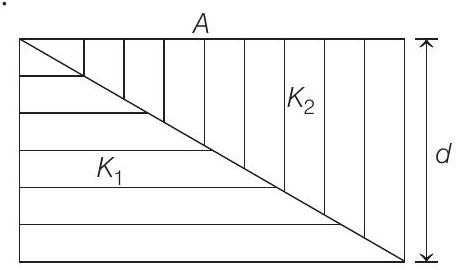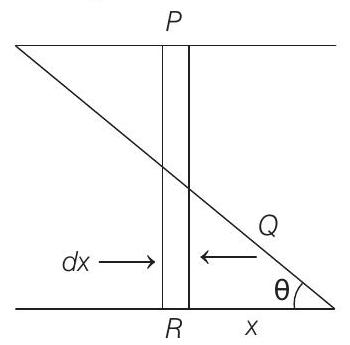Electrostatics 5 Question 47
49. The capacitance of a parallel plate capacitor with plate area

Show Answer
Answer:
Correct Answer: 49.
Solution:
- Let length and breadth of the capacitor be

Now,
and
where,
Capacitance of
and
Now,
Then,
Now, the net capacitance of the given parallel plate capacitor is obtained by adding such infinitesimal capacitors placed parallel from
i.e.
Finally we get






